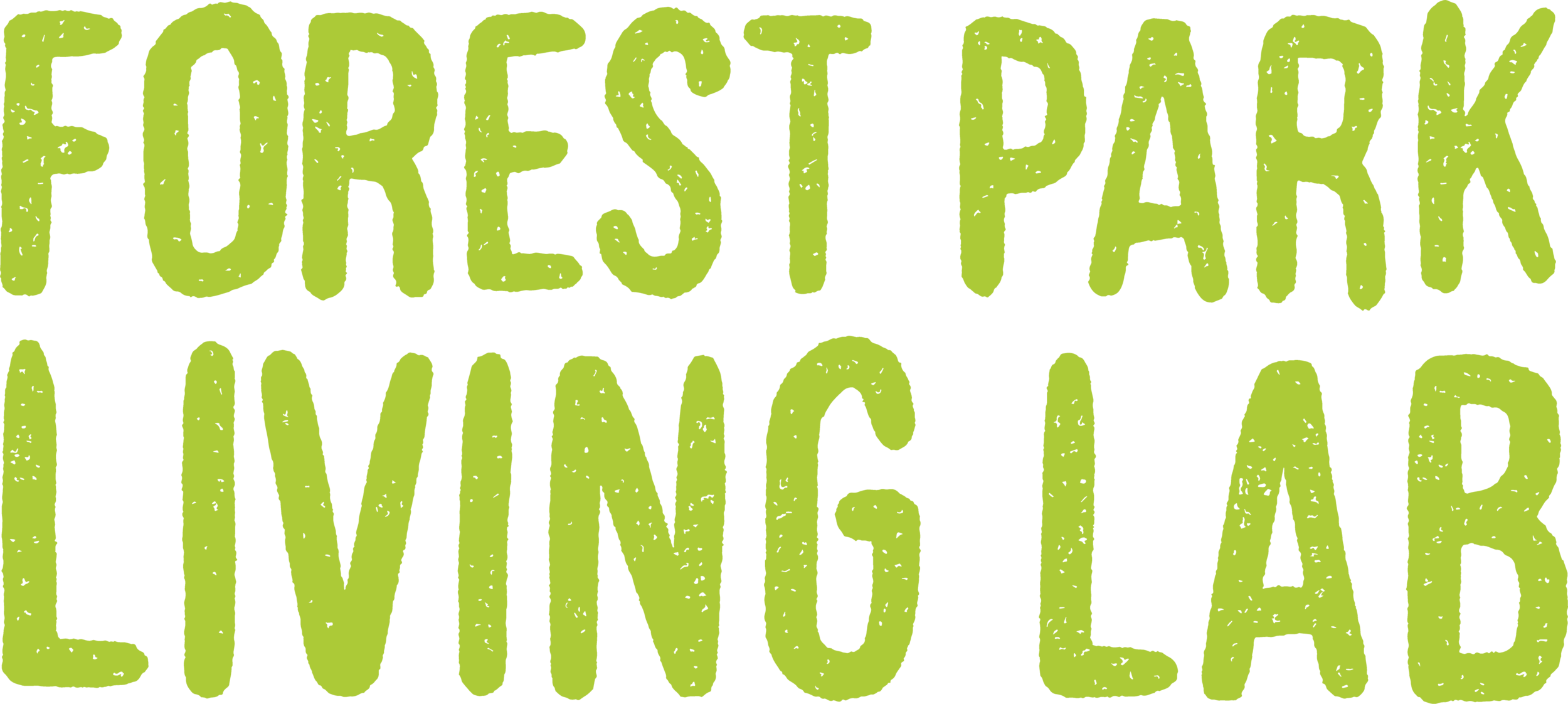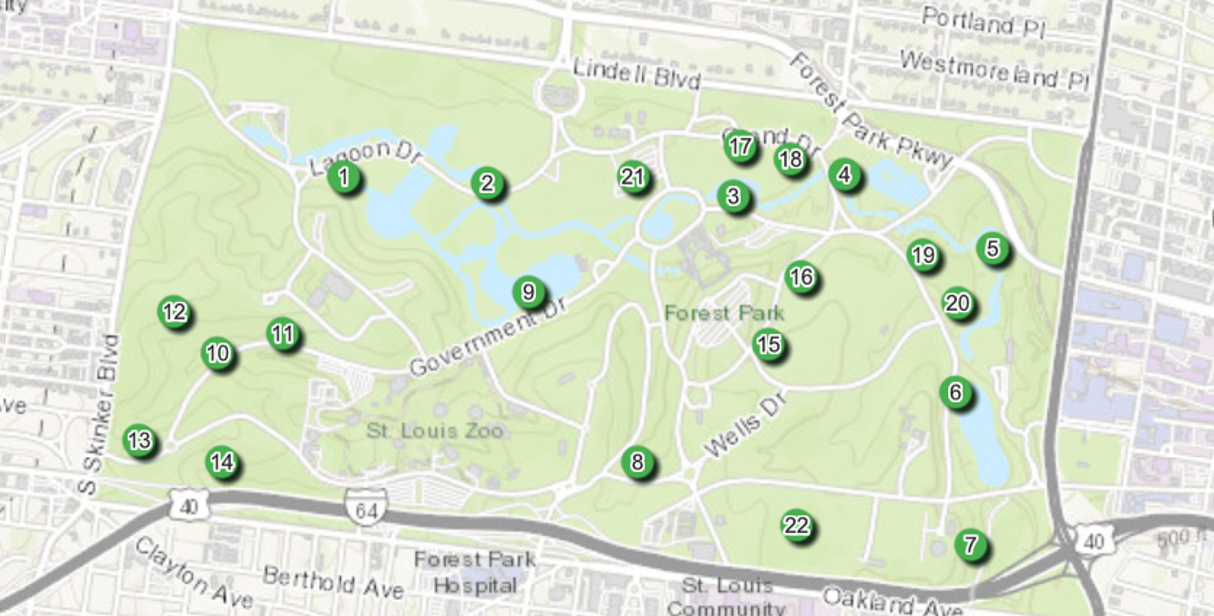I spy with my little eye… something feathery
Birds are often all around us, but usually go unnoticed by the people around them. Have you ever taken a minute to observe all the birds around you? You may see a flicker of yellow as a Yellow-rumped Warbler flits by or a flash of red as a Northern Cardinal zips past. You may hear the song of an American Robin, the laughing call of a White-breasted Nuthatch, or the drumming of a Red-bellied Woodpecker. Observing birds, or “birding,” is a great way to learn about the ecosystem around you.
A Common Grackle (Quiscalus quiscula) perched on a branch in Forest Park. These noisy birds sing a shrill, squeaky song while puffing up their feathers.
Birds act as indicator species for overall ecosystem health due to their sensitivity to environmental change, their important ecological roles in seed dispersal and insect management, and the ease with which they can be observed by researchers. For the Forest Park Living Lab, this has made birds the perfect candidates for study, and observing birds is exactly what we’ve been up to. Since August 2023, we have been conducting bird surveys at various points across Forest Park. The purpose of these surveys is to understand bird diversity and abundance by collecting observational data on birds across different habitats, levels of development, and seasons. In addition to providing a current snapshot, these data will be compared to past survey data so we can see how avian community composition and distribution within Forest Park may have changed over time.
Intern Grace Witsken scans the treetops for birds during a survey.
So, how are we doing this? We visit twenty-two designated sites every two weeks to observe birds. These sites vary from the middle of Kennedy woods, to the edge of a lake, or even the middle of a parking lot. We note environmental influences that could affect bird behavior, such as the temperature, wind speed, and number of people nearby. Then, the fun part: for ten minutes, we stand at each site and observe any birds nearby. We note each species we see or hear, how many individuals of that species are present, and their distance from us.
A map of survey sites in Forest Park.
We never quite know what we may find while surveying; some days, the birds are less active, while other days, we may see so many that it’s difficult to keep up! We may spy a Bald Eagle soaring overhead, a tiny Nashville Warbler sitting on a branch, or a Great Blue Heron catching breakfast. Gaining a greater understanding of Forest Park’s birds through these surveys will contribute to a more holistic understanding of Forest Park as an urban ecosystem.
A Killdeer (Charadrius vociferus) in Forest Park. These birds are often found in mowed grassy areas and can be identified by their shrill kill-deer call.
By National Great Rivers Research and Education Center intern Grace Witsken.




